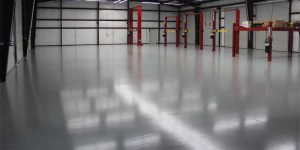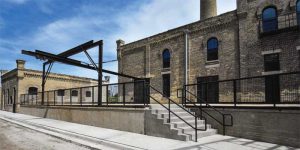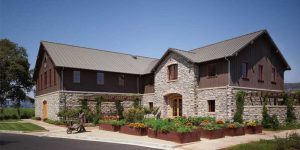The acoustics are the heart and soul of the church. When the architect gets it right, they can enhance the emotional, intellectual, and spiritual impact of a church sermon or musical performance, helping to make church services a truly unforgettable experience for worshippers.
+ Read More
|
MCI technology is an important option for concrete structural designers to consider. MCI has shown itself to be a viable tool to reduce corrosion and extend service life. Its benefits in terms of practicality, cost-effectiveness, ease of use, and service life potential make it worthy of further investigation by...
+ Read More
|
There are two flooring chemistries that have both existed in the United States for more than 15 years but are rarely specified relative to their epoxy counterparts. Urethane cements and methyl methacrylate (MMA) have already been established as viable resinous flooring solutions for a variety of challenges. Urethane cements...
+ Read More
|
When specifying flooring, one should consider both sustainability and performance. They are not mutually exclusive, but rather completely integrated. Both are affected by the material science that goes into the product: How are they constructed? Where do the materials come from that make these products?
+ Read More
|
Adaptive reuse is a process of retrofitting old buildings for new uses allowing structures to retain their historic integrity while providing for occupants’ modern needs. These projects preserve what’s best about historic properties, but develop them in a way that is modern and usable, and infuse new life into...
+ Read More
|
As a part of the living history of construction, archaic floor systems exist in many buildings despite having been supplanted by modern construction methods. As a building manager or design professional, it is important to be aware these systems are in use today, and to recognize one in place...
+ Read More
|
For commercial building projects seeking next-level sustainability, architects and specifiers now have the option of choosing coil or extrusion coatings formulated without the use of LBC Red List chemicals. With reduced harsh materials, these high-performance, durable, architectural coating systems support LEED v4.1 and LBC Red List compliance when applied...
+ Read More
|
With a greater understanding of indoor environmental quality, acoustic ceiling material choices, and relevant product certifications, specifiers can have a positive impact on buildings’ indoor air quality, lighting, safety, acoustic comfort, and on people’s health and well-being.
+ Read More
|
Improper design, poor construction techniques, and lack of maintenance can allow chlorinated water to migrate into the pool’s concrete shell and embedded structural reinforcement. To ensure the longevity of the pool structure and its components, design professionals must be familiar with state-of-the-art construction technology and performance-based design.
+ Read More
|
There are several key considerations that door hardware must comply with to meet Americans with Disabilities Act (ADA) requirements, including the approach to the door, the opening clearance, thresholds, surfaces, operating hardware, closing speed, opening force, and exit door signage.
+ Read More
|
|
|














